Click to view our Accessibility Statement or contact us with accessibility-related questions









Showing 1 of 16 conversations about:

Jaggi
737
Sep 9, 2016
bookmark_border

Jaggi
737
Sep 9, 2016
bookmark_border
endasc2Performing a scientifically valid test of digital audio played back at different bit depths/rates is quite complex. As far as I'm aware, so far no one has been able to demonstrate in such a test the ability to reliably determine the difference between playback at 16/44.1 versus playback at any given higher bit depth or sample rate.
I guess what I'm trying to say is - if you're going to claim that you can hear the difference, you might find that you'll be expected to put a lot of effort into describing and validating your testing methods :)
Getting back to the D20, yeah if you're going to use this DAC you want to avoid using the USB input if possible. From doing a little more reading I understand it uses synchronous data transfer (not surprising given the price and the fact the design is a few years old). So on top of the limited bit depth and sample rate, the USB input is likely to have higher levels of jitter than the optical/coax inputs.
I guess what I'm trying to say is - if you're going to claim that you can hear the difference, you might find that you'll be expected to put a lot of effort into describing and validating your testing methods :)
Getting back to the D20, yeah if you're going to use this DAC you want to avoid using the USB input if possible. From doing a little more reading I understand it uses synchronous data transfer (not surprising given the price and the fact the design is a few years old). So on top of the limited bit depth and sample rate, the USB input is likely to have higher levels of jitter than the optical/coax inputs.

endasc2
18
Sep 11, 2016
bookmark_border
Jaggihmmm. After you informed it's impossible to hear a difference you're likely right. But on certain songs I can swear I 'feel' a difference. 24bit sounds 'thicker' and 96khz just sounds louder on certain songs. Maybe it's my cheaper hyperx 2 cans and Objective O2 amp that are causing some problems. Either way I still think this is a sweet DAC for 30 bucks cheaper than the modi and comes with the ability to go toslink for macs.

joementor
14
Sep 12, 2016
bookmark_border
endasc2endasc2, your focus is correct. Noise is the overriding issue. You might want to check out Amarra and try to get as much uncompressed music as possible (ideally with a higher bit rate and sampling rate). My additional recommendation is to get the best tube amp you can afford, great wires, and after doing research get yourself the best tubes possible. Match that to the best headphones you see hear at Massdrop (avoid the boom factories - go for accurate). That will give you incredibly good sounds that is within reach.
Thirty years ago, the most popular audio magazine what Stereo Review. Their lead reviewer, Julian Hersch, constantly argued that you couldn't hear the difference between amplifiers with distortion below a certain point. This claim from a man who had failed hearing. I'm convinced people who claim you can't hear the difference between music sampled at higher and lower sampling rates and frequencies are either relying on what they read (not listening), don't have a trained ear (e.g. aren't a musician or sound engineer), don't know what to listen for, haven't tried, or simply can't hear (as with Julian Hersch).
The scientist often quote the Nyquist-Shannon sampling theorem that establishes that in order to reproduce a frequency, you must have a sampling frequency twice that. So, if you want to reproduce 20,000 hertz, you need a sampling frequency of 40kHz or greater (20k being the upper end of what humans can hear - at birth). So, CDs sample at 44.1kHz. This is correct and also a very limited perspective (both in terms of digital audio engineering and in terms of sound). With digital audio, there is something called sideband noise that extends 20kHz above and below the sampling frequency. One problem with 44.1k sampling is that the sideband noise is so close to the music (half a note away) that it requires brick wall filters or oversampling. Sampling at 96k avoids that digital sideband noise issue completely.
When CDs first came out in the 1980s, Stereo Review declared that CDs meant that we would now have "Perfect Sound Forever." After all, the numbers don't lie - or do they? On CDs, distortion was vanishingly low, they provide great dynamic range, and they didn't wear out. At that time, audiophiles were saying that while incredibly clean, CDs sounded terrible (as much an exaggeration as "Perfect Sound Forever"). What audiophiles were hearing (yes, HEARING) was the artifacts of far-from-perfect digital audio. The problems included harsh upper register, loss of soundstage, the inability to resolve differences in timbre, and a significant problem with listener fatigue. The problem was both on the production side and on the disks. So, this issue of what we can and cannot hear has been with us from the start of digital audio, but numbers are not ears. What is often overlooked is that we are only beginning to understand the brain, and what can be perceived by the senses, and how.
[As a sidebar, I can recall attending a meeting at Sony where their engineers claimed that their audio compression could resolve lossless 16-bit resolution in one-fifth the space of a CD (this was in the middle 1990s). On five consecutive double-blind tests I was able to identify the compressed and uncompressed sample every time. They asked me how I was doing that. Compression is a different topic, but I'm making a point.]
At a very basic level, you need to think about what 16/44.1 or 24/96 mean. What is a sample? A sample is like a "picture" reconstruction of the the audio sine wave. A 16-bit sample can resolve 2 to the 16th power or 65,536 values per sample, while a 24-bit sample can resolve 2 to the 24th power or 16.78 million discrete values per sample. Simply put, the higher the sampling rate, the more information can be stored and the detail that can be resolved. A sampling rate of 44.1 kHz means that there are 44,100 samples per second. That sounds like a lot, but it is not (it's barely enough). Likewise, a sampling rate of 96k means that there are 96,000 samples per second (it also means more dynamic range, but that we rally can't hear because 144 db would make us deaf). The key thing with a 96k sampling frequency is that there is less than half the space between samples, bringing the sound closer to a continuum (closer to analog), with greatly reduced stair-stepping in the raw analog output, thereby reducing or eliminating the need for filtering of that noise. So, what you are comparing is a system that can resolve 65, 536 discrete values per sample and doing that 44,100 times a second to a system that can resolve 16.78 million discrete values per sample and doing that 96,000 times a second. The latter is better.
Can you hear the difference? I don't know, Can you hear differences in the decay of instruments or recognize the accuracy of their timbre, or soundstage (side-to-side, front-to-back, and top-to-bottom), or the placement of instruments in that space, or the sound of the venue based on direct, reflected, and reverberant sound, or with more processed music are you able to hear the sound of voice layering, limiters, gates, pitch correctors, and the various other effect processors. These are some of the things that are harder to resolve and more easily masked by noise or lost while encoding. They are also the things that I can hear on high bit rate, high-resolution systems, in a low-noise environment (especially in an anechoic chamber), and being played back on a system with sufficient capability. The nice thing about headphones is that for less than $1000 you can get sound quality that would take upwards of $20k to get in a high-end stereo system. However, there is a big missing. Headphones don't reproduce a massive soundstage. However, the percentage of people who can afford or are willing to spend north of $20k or much more for an two speaker audio system is vanishingly small.
When thinking about audio, what you can perceive and what you can't, I believe it helps to think about video. For some reason, people are much more confident in their ability to see. Think about video. Can you tell the difference between standard definition and HD, or between HD and UHD? People will tell you that you can't tell the difference between HD and UHD on a display that is 50-inches or smaller (and of course that would be affected by the distance to the screen). Usually, this is a myopic argument focusing too narrowly on resolution as a measurement of pixels.
Pixels are only one aspect of resolution, and it is probably what is least important. What about color gamut? What about contrast ratio? Here it becomes very hard for the consumer because the specifications claimed by TV manufacturers are total BS (Barbara Streisand).
[Sidebar: Samsung's claims on their mega expensive UHG LED/LCD TVs are absurd in the extreme and that TV is way overpriced Don't buy it or any curved LED/LCD TV because of horrible off-axis performance and light bleed-through. Curved OLED is fine. If you want a great TV, get one of LG's UHG OLED TVs. They are the best TV in the world by far and their patents make that not likely to change for a while (unless others buy the panels from LG and then brand them).]
Getting back to my point...
Here is how we see. Think about seeing a ship on the ocean way out on the horizon. What you perceive first is contract. You might only barely be able to make it out, and you see it in black-and-white. You see contrast. Then you see color, and then you see resolution. All are important and all are aspects of a display's ability to resolve a picture (motion is another). Masterpiece paintings aren't necessarily great because of their detail, often not. While UHG provides four times the resolution of HD, but it also provides a much wider color gamut (more colors) and more contrast. Audio works in a similar way. Realistic music reproduction is a function of three fundamentals; dynamics, soundstage, and timbre (harmonics). Dynamic range is the difference between soft and loud. It's like contrast ratio on video. If there is noise, it masks the softer sounds (no matter how much resolution there is), just as a TV with poor contrast masks video resolution. One problem with LED/LCD TVs that's not a problem on plasma or OLED is that you can see motion artifacts. The most obnoxious being the football on a long pass being choppy in its motion. So, what do they do to try to compensate? They up the frame rate. That's analogous to upping the sampling rate in digital audio. I could go on, but this is long enough. First, focus on getting rid of the noise. Then, work on getting the rest of the pieces in place (source, playback system, environment), and if you do it right - THEN you'll hear the difference. 100%! But only then.
All the best
Joe
Thirty years ago, the most popular audio magazine what Stereo Review. Their lead reviewer, Julian Hersch, constantly argued that you couldn't hear the difference between amplifiers with distortion below a certain point. This claim from a man who had failed hearing. I'm convinced people who claim you can't hear the difference between music sampled at higher and lower sampling rates and frequencies are either relying on what they read (not listening), don't have a trained ear (e.g. aren't a musician or sound engineer), don't know what to listen for, haven't tried, or simply can't hear (as with Julian Hersch).
The scientist often quote the Nyquist-Shannon sampling theorem that establishes that in order to reproduce a frequency, you must have a sampling frequency twice that. So, if you want to reproduce 20,000 hertz, you need a sampling frequency of 40kHz or greater (20k being the upper end of what humans can hear - at birth). So, CDs sample at 44.1kHz. This is correct and also a very limited perspective (both in terms of digital audio engineering and in terms of sound). With digital audio, there is something called sideband noise that extends 20kHz above and below the sampling frequency. One problem with 44.1k sampling is that the sideband noise is so close to the music (half a note away) that it requires brick wall filters or oversampling. Sampling at 96k avoids that digital sideband noise issue completely.
When CDs first came out in the 1980s, Stereo Review declared that CDs meant that we would now have "Perfect Sound Forever." After all, the numbers don't lie - or do they? On CDs, distortion was vanishingly low, they provide great dynamic range, and they didn't wear out. At that time, audiophiles were saying that while incredibly clean, CDs sounded terrible (as much an exaggeration as "Perfect Sound Forever"). What audiophiles were hearing (yes, HEARING) was the artifacts of far-from-perfect digital audio. The problems included harsh upper register, loss of soundstage, the inability to resolve differences in timbre, and a significant problem with listener fatigue. The problem was both on the production side and on the disks. So, this issue of what we can and cannot hear has been with us from the start of digital audio, but numbers are not ears. What is often overlooked is that we are only beginning to understand the brain, and what can be perceived by the senses, and how.
[As a sidebar, I can recall attending a meeting at Sony where their engineers claimed that their audio compression could resolve lossless 16-bit resolution in one-fifth the space of a CD (this was in the middle 1990s). On five consecutive double-blind tests I was able to identify the compressed and uncompressed sample every time. They asked me how I was doing that. Compression is a different topic, but I'm making a point.]
At a very basic level, you need to think about what 16/44.1 or 24/96 mean. What is a sample? A sample is like a "picture" reconstruction of the the audio sine wave. A 16-bit sample can resolve 2 to the 16th power or 65,536 values per sample, while a 24-bit sample can resolve 2 to the 24th power or 16.78 million discrete values per sample. Simply put, the higher the sampling rate, the more information can be stored and the detail that can be resolved. A sampling rate of 44.1 kHz means that there are 44,100 samples per second. That sounds like a lot, but it is not (it's barely enough). Likewise, a sampling rate of 96k means that there are 96,000 samples per second (it also means more dynamic range, but that we rally can't hear because 144 db would make us deaf). The key thing with a 96k sampling frequency is that there is less than half the space between samples, bringing the sound closer to a continuum (closer to analog), with greatly reduced stair-stepping in the raw analog output, thereby reducing or eliminating the need for filtering of that noise. So, what you are comparing is a system that can resolve 65, 536 discrete values per sample and doing that 44,100 times a second to a system that can resolve 16.78 million discrete values per sample and doing that 96,000 times a second. The latter is better.
Can you hear the difference? I don't know, Can you hear differences in the decay of instruments or recognize the accuracy of their timbre, or soundstage (side-to-side, front-to-back, and top-to-bottom), or the placement of instruments in that space, or the sound of the venue based on direct, reflected, and reverberant sound, or with more processed music are you able to hear the sound of voice layering, limiters, gates, pitch correctors, and the various other effect processors. These are some of the things that are harder to resolve and more easily masked by noise or lost while encoding. They are also the things that I can hear on high bit rate, high-resolution systems, in a low-noise environment (especially in an anechoic chamber), and being played back on a system with sufficient capability. The nice thing about headphones is that for less than $1000 you can get sound quality that would take upwards of $20k to get in a high-end stereo system. However, there is a big missing. Headphones don't reproduce a massive soundstage. However, the percentage of people who can afford or are willing to spend north of $20k or much more for an two speaker audio system is vanishingly small.
When thinking about audio, what you can perceive and what you can't, I believe it helps to think about video. For some reason, people are much more confident in their ability to see. Think about video. Can you tell the difference between standard definition and HD, or between HD and UHD? People will tell you that you can't tell the difference between HD and UHD on a display that is 50-inches or smaller (and of course that would be affected by the distance to the screen). Usually, this is a myopic argument focusing too narrowly on resolution as a measurement of pixels.
Pixels are only one aspect of resolution, and it is probably what is least important. What about color gamut? What about contrast ratio? Here it becomes very hard for the consumer because the specifications claimed by TV manufacturers are total BS (Barbara Streisand).
[Sidebar: Samsung's claims on their mega expensive UHG LED/LCD TVs are absurd in the extreme and that TV is way overpriced Don't buy it or any curved LED/LCD TV because of horrible off-axis performance and light bleed-through. Curved OLED is fine. If you want a great TV, get one of LG's UHG OLED TVs. They are the best TV in the world by far and their patents make that not likely to change for a while (unless others buy the panels from LG and then brand them).]
Getting back to my point...
Here is how we see. Think about seeing a ship on the ocean way out on the horizon. What you perceive first is contract. You might only barely be able to make it out, and you see it in black-and-white. You see contrast. Then you see color, and then you see resolution. All are important and all are aspects of a display's ability to resolve a picture (motion is another). Masterpiece paintings aren't necessarily great because of their detail, often not. While UHG provides four times the resolution of HD, but it also provides a much wider color gamut (more colors) and more contrast. Audio works in a similar way. Realistic music reproduction is a function of three fundamentals; dynamics, soundstage, and timbre (harmonics). Dynamic range is the difference between soft and loud. It's like contrast ratio on video. If there is noise, it masks the softer sounds (no matter how much resolution there is), just as a TV with poor contrast masks video resolution. One problem with LED/LCD TVs that's not a problem on plasma or OLED is that you can see motion artifacts. The most obnoxious being the football on a long pass being choppy in its motion. So, what do they do to try to compensate? They up the frame rate. That's analogous to upping the sampling rate in digital audio. I could go on, but this is long enough. First, focus on getting rid of the noise. Then, work on getting the rest of the pieces in place (source, playback system, environment), and if you do it right - THEN you'll hear the difference. 100%! But only then.
All the best
Joe

endasc2
18
Sep 13, 2016
bookmark_border
joementorWow thanks Joe! That was a great response. Thanks for taking the time to write it. If I understand what you wrote, then higher bit rates have smaller 'gaps' in between binary audio information giving a clearer more accurate sound when it gets converted into analog.
And as for audio equipment I'm unfortunately on a budget (just graduated). I currently need new cables (toslink to toslink mini as you recommended) as well as an 2 RCA plug to 2 RCA plug cable to connect my amp to the topping DAC when it arrives. But my headphones also aren't as good as they could be, and maybe I should upgrade them. And I checked out that Amarra music player you mentioned and it looked pretty fantastic. I can either afford the Amarra and the cables, or headphones at the moment because my budget is about 230 USD for the time being. If you were in my shoes, which route would you go? And if you went the headphone route, can you think of any headphones that would be decent around the price range I mentioned? And if you went the cable route, which 2 RCA plug to 2 RCA plug cable would you recommend?
Either way, over time I'll be sure to work my way towards getting as much of what you recommended as possible.
And as for audio equipment I'm unfortunately on a budget (just graduated). I currently need new cables (toslink to toslink mini as you recommended) as well as an 2 RCA plug to 2 RCA plug cable to connect my amp to the topping DAC when it arrives. But my headphones also aren't as good as they could be, and maybe I should upgrade them. And I checked out that Amarra music player you mentioned and it looked pretty fantastic. I can either afford the Amarra and the cables, or headphones at the moment because my budget is about 230 USD for the time being. If you were in my shoes, which route would you go? And if you went the headphone route, can you think of any headphones that would be decent around the price range I mentioned? And if you went the cable route, which 2 RCA plug to 2 RCA plug cable would you recommend?
Either way, over time I'll be sure to work my way towards getting as much of what you recommended as possible.

joementor
14
Sep 13, 2016
bookmark_border
endasc2Hi endasc2. Technically, 16-bit, 20-bit, and 24-bit are not bit "rates." They are samples. They are more akin to languages, where the number describes the length of the bit word (in a PCM system). Again, translating this into a picture (I believe) makes it easier to understand. Think of 8-bit color versus 12-bit color. An 8-bit sample would be able to resolve 256 different colors, while a 12-bit sample would be able to resolve 4,096 different colors. Calling these things bit rates is very common and no great sin. I catch myself doing it on occasion. Just be aware that those more focus on the technicalities (and arguments) might use it to be condescending with you in a conversation. It is the sampling frequency (44.1 kHz, 96k, etc.) that indicates the space between the samples.
Digital audio is such a complex thing technically, it's easy to get hung up in what is less important, which is the resultant sound. Computer audio has so many issues that get in the way of great sound that focusing too much on sample size and frequency is lick putting the cart before the horse. The reality is that the vast majority of what you'll listen to is CD quality or less. So, getting the absolute most out of those will give you the most return on investment (of time and money). I've already talked about noise and you rightly keyed in on how going optical has a huge ROI. You have a Mac and you can take advantage of that, and this is what makes the D20 DAC a good deal for us. It may not be for other, but noise is the biggest enemy here and eliminating the noise antenna (wires) is a huge step forward when locating them near noise factories (a computer). So yes, getting the optical cable is recommendation numero uno. If you can swing the Audioquest Forest, get that. The RCA cable need to be well shielded. Good analog cables will make a much bigger difference than good digital cables. Get the shortest cables you can and be sure to position your audio components away from your computer. It's a good idea to fun a longer optical cable from your computer to you audio system and then run the shortest analog cables possible (all shielded in this environment). By the way, twisted wire cables (while not technically shielded) do reject noise if they are twisted correctly. Also, the thicker the actually wire inside the cable the better. For $10, the KableDirect on Amazon appear to be a good deal in the uber-budget range, but I've never used them. HOLD ON... I did a quick search for used cable on eBay and found a fantastic deal (if a four foot pair works for you). These Monster Cable THX-certified cables for $15 are a steal. They probably sold for $100 new. Very high quality, excellent terminations and connectors, nice braided cover, and superior shielding. They are excellent. If these meet your needs, buy them immediately. http://www.ebay.com/itm/Monster-THX-Stereo-Audio-Interconnect-CD-Player-RCA-Cable-4FT-/222210520695?hash=item33bcc77677:g:F8MAAOSwmmxW3KJP
As far as headphones versus Amarra, I'd probably upgrade my headphones first, unless I fell in love with some that I need to save up for. Headphones are kind of like shoes. It's hard to get the right ones for you without trying them on. So, if you can go to a store that has great headphones and try them, do it. Tell the sales guy or gal that you're saving up for a great set of headphones, but you want to figure out what's best for you. That way, they know you're not in a position to purchase today. Here is some general guidance on headphones. While personal taste definitely factors into it, too many are incredibly colored - most have boosted bass that is what most people want, but they aren't accurate at all.
I like AKG and Sennheiser generally, but certainly not exclusively. I tend to like things that are accurate and the European brands tend to be that, but a slight attenuation of the bass can be nice. Just remember, muddy bass means that you can't hear detail in the mids. The AKG K7xx on Massdrop are a fantastic deal at $199 (sometimes red, sometimes black, but they repeat on Massdrop). Dealer cost on headphones is typically half off retail (they're high margin), so anything below that is an extra special deal. These are the same as K701 or K702 and they really do retail for $649. They are the most comfortable headphones known to man, never get sweaty, never press against your ears, and are very detailed and super accurate. However, many will find them light on bass (not because they are, but because they don't boost the bass). They may not be your cup of tea, and that's okay. Another thing I like about them is the detachable cable. It can be upgraded (though probably doesn't need to be unless you've got money to burn), but cables can get damaged and connections can fail. The AKG M220 has vinyl pads that look like they might make you sweat, but read the comments and see what others say about them. Massdrop has had many great deals on headphones, but since I haven't listened to a lot of them it's hard to comment. I've heard Grado in the past and they were great (audiophile on a budget) headphones. Look at the ended drops. They had the Grado Prestige. These are probably outstanding at the Massdrop price. I think they had them for around $200 or $250 (if memory serves), but check out the discussion. Byerdynamic is a great brand. Focal makes superior drivers and speakers, so it stands to reason they're headphones should be excellent. There are many good cans, but without hearing them we're just making an educated guess. Nonetheless, getting the best headphones possible is arguably the thing that will make the most difference. You probably do need to spend a least $200 (at half price) to get a great set of headphones.
Final thought for this post... Trust your ears my friend. You can hear a lot. Don't let others convince you that you can't.
Joe
Digital audio is such a complex thing technically, it's easy to get hung up in what is less important, which is the resultant sound. Computer audio has so many issues that get in the way of great sound that focusing too much on sample size and frequency is lick putting the cart before the horse. The reality is that the vast majority of what you'll listen to is CD quality or less. So, getting the absolute most out of those will give you the most return on investment (of time and money). I've already talked about noise and you rightly keyed in on how going optical has a huge ROI. You have a Mac and you can take advantage of that, and this is what makes the D20 DAC a good deal for us. It may not be for other, but noise is the biggest enemy here and eliminating the noise antenna (wires) is a huge step forward when locating them near noise factories (a computer). So yes, getting the optical cable is recommendation numero uno. If you can swing the Audioquest Forest, get that. The RCA cable need to be well shielded. Good analog cables will make a much bigger difference than good digital cables. Get the shortest cables you can and be sure to position your audio components away from your computer. It's a good idea to fun a longer optical cable from your computer to you audio system and then run the shortest analog cables possible (all shielded in this environment). By the way, twisted wire cables (while not technically shielded) do reject noise if they are twisted correctly. Also, the thicker the actually wire inside the cable the better. For $10, the KableDirect on Amazon appear to be a good deal in the uber-budget range, but I've never used them. HOLD ON... I did a quick search for used cable on eBay and found a fantastic deal (if a four foot pair works for you). These Monster Cable THX-certified cables for $15 are a steal. They probably sold for $100 new. Very high quality, excellent terminations and connectors, nice braided cover, and superior shielding. They are excellent. If these meet your needs, buy them immediately. http://www.ebay.com/itm/Monster-THX-Stereo-Audio-Interconnect-CD-Player-RCA-Cable-4FT-/222210520695?hash=item33bcc77677:g:F8MAAOSwmmxW3KJP
As far as headphones versus Amarra, I'd probably upgrade my headphones first, unless I fell in love with some that I need to save up for. Headphones are kind of like shoes. It's hard to get the right ones for you without trying them on. So, if you can go to a store that has great headphones and try them, do it. Tell the sales guy or gal that you're saving up for a great set of headphones, but you want to figure out what's best for you. That way, they know you're not in a position to purchase today. Here is some general guidance on headphones. While personal taste definitely factors into it, too many are incredibly colored - most have boosted bass that is what most people want, but they aren't accurate at all.
I like AKG and Sennheiser generally, but certainly not exclusively. I tend to like things that are accurate and the European brands tend to be that, but a slight attenuation of the bass can be nice. Just remember, muddy bass means that you can't hear detail in the mids. The AKG K7xx on Massdrop are a fantastic deal at $199 (sometimes red, sometimes black, but they repeat on Massdrop). Dealer cost on headphones is typically half off retail (they're high margin), so anything below that is an extra special deal. These are the same as K701 or K702 and they really do retail for $649. They are the most comfortable headphones known to man, never get sweaty, never press against your ears, and are very detailed and super accurate. However, many will find them light on bass (not because they are, but because they don't boost the bass). They may not be your cup of tea, and that's okay. Another thing I like about them is the detachable cable. It can be upgraded (though probably doesn't need to be unless you've got money to burn), but cables can get damaged and connections can fail. The AKG M220 has vinyl pads that look like they might make you sweat, but read the comments and see what others say about them. Massdrop has had many great deals on headphones, but since I haven't listened to a lot of them it's hard to comment. I've heard Grado in the past and they were great (audiophile on a budget) headphones. Look at the ended drops. They had the Grado Prestige. These are probably outstanding at the Massdrop price. I think they had them for around $200 or $250 (if memory serves), but check out the discussion. Byerdynamic is a great brand. Focal makes superior drivers and speakers, so it stands to reason they're headphones should be excellent. There are many good cans, but without hearing them we're just making an educated guess. Nonetheless, getting the best headphones possible is arguably the thing that will make the most difference. You probably do need to spend a least $200 (at half price) to get a great set of headphones.
Final thought for this post... Trust your ears my friend. You can hear a lot. Don't let others convince you that you can't.
Joe

endasc2
18
Sep 13, 2016
bookmark_border
joementorThanks Joe! I just bought the cable, and I'm gonna look around at headphones. The AKG 7xx's do look very nice and have double the frequency response of the headphones I'm using now, but I can't help but be curious about headphones that support magnetic flux density. Is magnetic flux density something I want to be looking into? or is it just personal preference, because I could wait and save up some more money to buy better quality headphones at a later date. And I just googled bit rates, and found out bits are computer bytes, as in kilobytes, megabytes etc. and that made it a lot more clear. I didn't realize they were the same thing lol. And bit rate is really bit depth, and bit depth determines how many bytes are in each sample. I hope that I'm getting it there.
Thanks again, Enda (Steve)
Thanks again, Enda (Steve)

joementor
14
Sep 13, 2016
bookmark_border
endasc2Hi Steve,
There is no doubt that the Beyerdynamic headphones are excellent. However, I would caution you to become too enamored with "magnetic flux density." That is not to say that what this catchy marketing term describes (neodymium magnet, ring diaphragm, etc.) aren't part of an excellent design, they probably are. However, the term "magnetic flux density" reminds me of "Assemetrical Charge-coupled Detection" or ACCD. What the heck is that?
Back in the 1980s, Carver (a company that made mostly entry-level high-end audio equipment) had an $800 FM tuner that had this feature. Here's how they described it. "ACCD is 472 solid-state circuits that reduce FM noise by ten times." Sound great! What was it really? It was an FM mono switch that then synthesized stereo. As mono FM is much quieter than stereo, it did reduce noise, but synthesized stereo was no match for the real deal. Truth be known, there were much better tuners available for less money. At the time, you could have purchased a Magnum-Dynalabs tuner for $650. Today, they cost thousands. Beyerdynamics talks about Tesla technology and flux density. How appealing is that. They leverage the popularity of Tesla cars (which kill you if you actually let them drive) and perhaps the popular appeal of the movie Back to the Future to draw attention to their product. Smart. In this case, Beyer is using sound design and there are strong benefits in their application of electro-mechanical engineering. Using neodymium magnets is hardly revolutionary or unique (great, but not revolutionary). My question would be that does using a ring magnet rather than having the voice coil "ring" around the magnet create the increased magnetic field that they claim or are they comparing the performance of a conventional magnet to that of neodymium magnets which are more powerful for their size than conventional magnets (and are ideal for headphones). I suspect the later is the case.
Neodymium is a rare earth material and more expensive. I haven't studied their design, but I'm not sure that their design would offer a significant benefit. However, I'm open to being persuaded by one of their engineers. Here's the thing, in marketing one of the things you want is exclusivity (something you have that others don't). If you come up with a term like "magnetic flux density," you can trademark it. If the design is different enough, you can patent it (and remember that different doesn't necessarily mean better. Then, you can market your unique product and its benefits, and the only place you can get this particular brand of marketing is from their brand.
Again, I'm not saying that "magnetic flux density" isn't great. If Beyerdynamics makes it, I'm sure it is great. What I'm saying is that probably all the great headphones use neodymium magnets and I'm not sure it is their ring magnet design that makes them great. Great design is usually the sum of the parts, and that is what makes the professional series AKG's great, and others great. There's more than one way to skin a cat you know.
If you want to check out a technology that is truly unique, and that does provide detail that none of these great dynamic headphones (headphones that use magnets) can match, check out some electrostatic headphones. They don't tend to have the dynamic range that dynamic headphones do, but IMO they do everything else better (and that I know is a grossly generalized statement). Stax is a Japanese company that makes electrostatic headphones. Check out the SR-009s. They are $3500 on Amazon, but Stax headphones are phenomenal - unmatched detail and resolution, incredible speed, and big soundstage.
Which headphones should you get, the ones that sound best to you (that you can afford). Beyerdynamics is among the best dynamic headphones. I listed them in my previous post. Just remember, if you're used to booming bass (which you probably are given that most headphones boost the bass dramatically), accurate headphones will take a little getting used to. However, over time you'll come to appreciate the accuracy, detail, space, and other benefits.
If you follow this link, you can download the poop sheets on the AKG 702s, but I pasted their features below... http://www.akg.com/pro/p/k702
K 702: Features � The new reference for open-back, dynamic headphones from AKG � Revolutionary flat-wire voice coil technology for extremely accurate sound and transient response � Professional plug-on cable � Patented Varimotion diaphragm for sparkling highs and accurate bass response � Two-layer diaphragm for wide dynamic range and superior clarity � High-performance neodymium magnet system for minimum distortion � High-performance, single sided 99.99% oxygen-free cable � Professional 1/4� jack plug � Comfortable, specially shaped “3D-Form” ear pads for perfect fit � Padded, genuine leather headband � Individually tested and numbered
That's all for now and I am glad you were able to get the THX Monster Cables. That was a steal. You're on your way.
Joe
There is no doubt that the Beyerdynamic headphones are excellent. However, I would caution you to become too enamored with "magnetic flux density." That is not to say that what this catchy marketing term describes (neodymium magnet, ring diaphragm, etc.) aren't part of an excellent design, they probably are. However, the term "magnetic flux density" reminds me of "Assemetrical Charge-coupled Detection" or ACCD. What the heck is that?
Back in the 1980s, Carver (a company that made mostly entry-level high-end audio equipment) had an $800 FM tuner that had this feature. Here's how they described it. "ACCD is 472 solid-state circuits that reduce FM noise by ten times." Sound great! What was it really? It was an FM mono switch that then synthesized stereo. As mono FM is much quieter than stereo, it did reduce noise, but synthesized stereo was no match for the real deal. Truth be known, there were much better tuners available for less money. At the time, you could have purchased a Magnum-Dynalabs tuner for $650. Today, they cost thousands. Beyerdynamics talks about Tesla technology and flux density. How appealing is that. They leverage the popularity of Tesla cars (which kill you if you actually let them drive) and perhaps the popular appeal of the movie Back to the Future to draw attention to their product. Smart. In this case, Beyer is using sound design and there are strong benefits in their application of electro-mechanical engineering. Using neodymium magnets is hardly revolutionary or unique (great, but not revolutionary). My question would be that does using a ring magnet rather than having the voice coil "ring" around the magnet create the increased magnetic field that they claim or are they comparing the performance of a conventional magnet to that of neodymium magnets which are more powerful for their size than conventional magnets (and are ideal for headphones). I suspect the later is the case.
Neodymium is a rare earth material and more expensive. I haven't studied their design, but I'm not sure that their design would offer a significant benefit. However, I'm open to being persuaded by one of their engineers. Here's the thing, in marketing one of the things you want is exclusivity (something you have that others don't). If you come up with a term like "magnetic flux density," you can trademark it. If the design is different enough, you can patent it (and remember that different doesn't necessarily mean better. Then, you can market your unique product and its benefits, and the only place you can get this particular brand of marketing is from their brand.
Again, I'm not saying that "magnetic flux density" isn't great. If Beyerdynamics makes it, I'm sure it is great. What I'm saying is that probably all the great headphones use neodymium magnets and I'm not sure it is their ring magnet design that makes them great. Great design is usually the sum of the parts, and that is what makes the professional series AKG's great, and others great. There's more than one way to skin a cat you know.
If you want to check out a technology that is truly unique, and that does provide detail that none of these great dynamic headphones (headphones that use magnets) can match, check out some electrostatic headphones. They don't tend to have the dynamic range that dynamic headphones do, but IMO they do everything else better (and that I know is a grossly generalized statement). Stax is a Japanese company that makes electrostatic headphones. Check out the SR-009s. They are $3500 on Amazon, but Stax headphones are phenomenal - unmatched detail and resolution, incredible speed, and big soundstage.
Which headphones should you get, the ones that sound best to you (that you can afford). Beyerdynamics is among the best dynamic headphones. I listed them in my previous post. Just remember, if you're used to booming bass (which you probably are given that most headphones boost the bass dramatically), accurate headphones will take a little getting used to. However, over time you'll come to appreciate the accuracy, detail, space, and other benefits.
If you follow this link, you can download the poop sheets on the AKG 702s, but I pasted their features below... http://www.akg.com/pro/p/k702
K 702: Features � The new reference for open-back, dynamic headphones from AKG � Revolutionary flat-wire voice coil technology for extremely accurate sound and transient response � Professional plug-on cable � Patented Varimotion diaphragm for sparkling highs and accurate bass response � Two-layer diaphragm for wide dynamic range and superior clarity � High-performance neodymium magnet system for minimum distortion � High-performance, single sided 99.99% oxygen-free cable � Professional 1/4� jack plug � Comfortable, specially shaped “3D-Form” ear pads for perfect fit � Padded, genuine leather headband � Individually tested and numbered
That's all for now and I am glad you were able to get the THX Monster Cables. That was a steal. You're on your way.
Joe

endasc2
18
Sep 13, 2016
bookmark_border
joementorThanks for the great replies Joe. I'm gonna try and educate myself a little more about headphones before I take the plunge I think. Your guidance has been great but I wanna understand a little bit more of the technology behind some of the mid-tier headphones, and what would distinguish one from another.
Thanks again,
Steve
Thanks again,
Steve

joementor
14
Sep 13, 2016
bookmark_border
endasc2Steve, that's a wise approach. If you'd like to ping me directly, you can at joementor@comcast.net. If you email me now, I'll delete this post for privacy reasons. Joe.


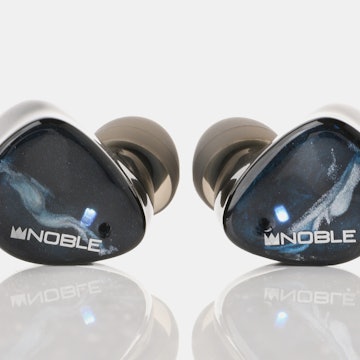
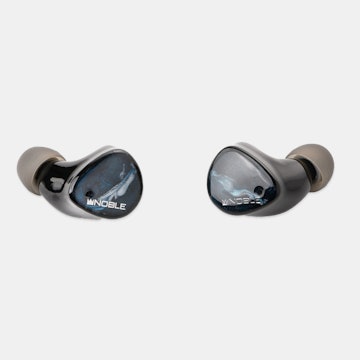
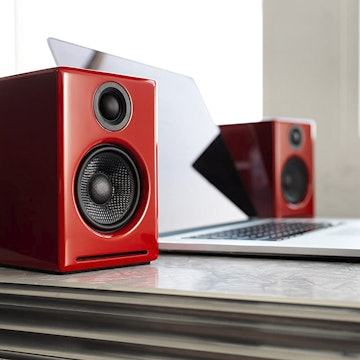
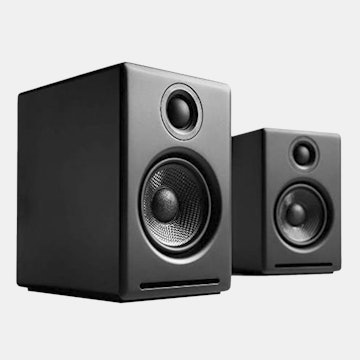
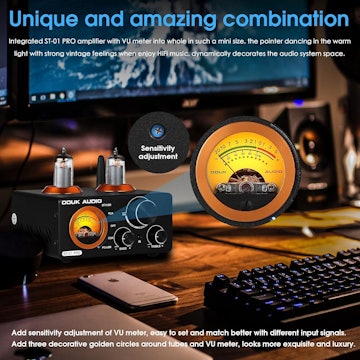
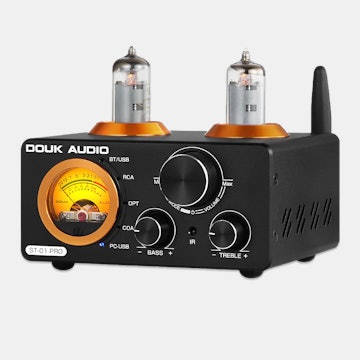

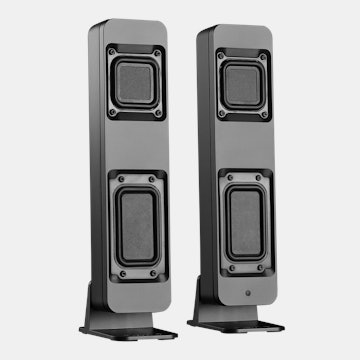
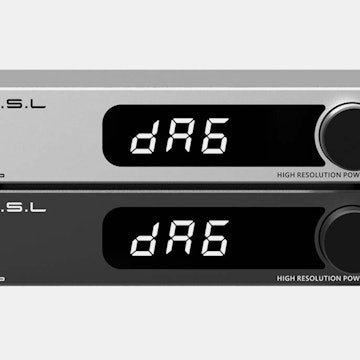
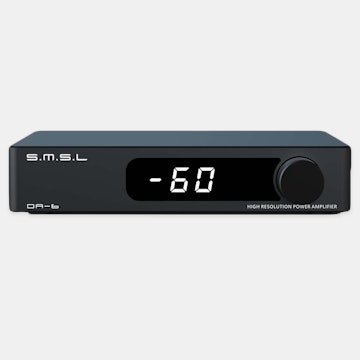
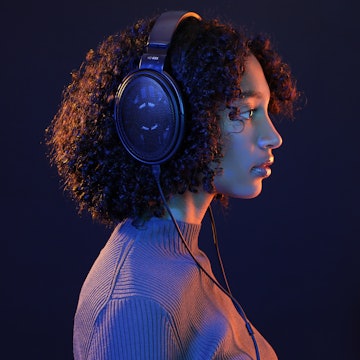
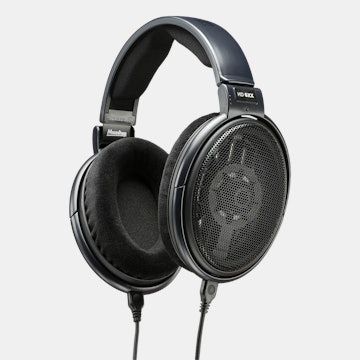
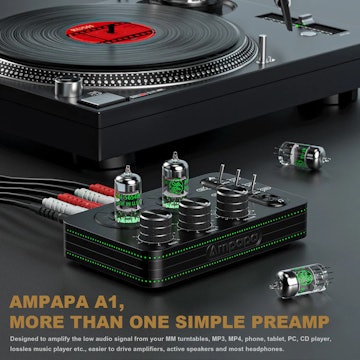
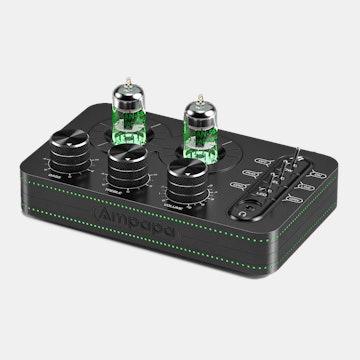
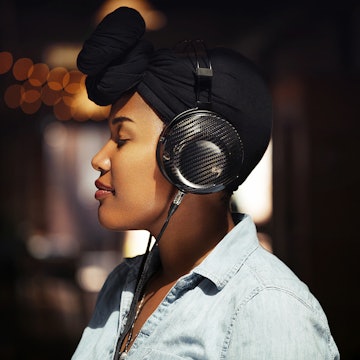
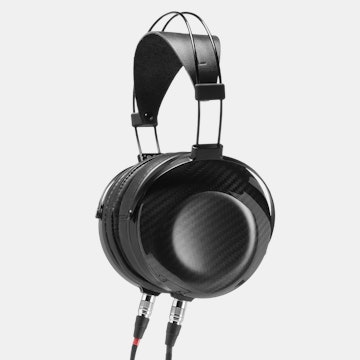
The question then becomes - does the D20 offer something special in terms of audio quality to make it a good deal for the price? I'm not entirely convinced that it does just on the basis of one review.
And it would annoy me to own a DAC with a USB input that was so limited compared with what the DAC itself is capable of. If a DAC has a USB input, I want to be able to use it without having to worry about it's particular limitations.
BTW, I'm fairly skeptical of a lot of the audiophile nonsense that goes around, and I'm not convinced there's any benefit to higher than 16-bit/44kHz when it comes to playback. But given issues like digital volume control, use of software EQ and real-time mixing of multiple sources that tend to occur with computer based playback, I'd prefer not to have everything re-sampled back down to 16-bit just because of a USB input limitation.